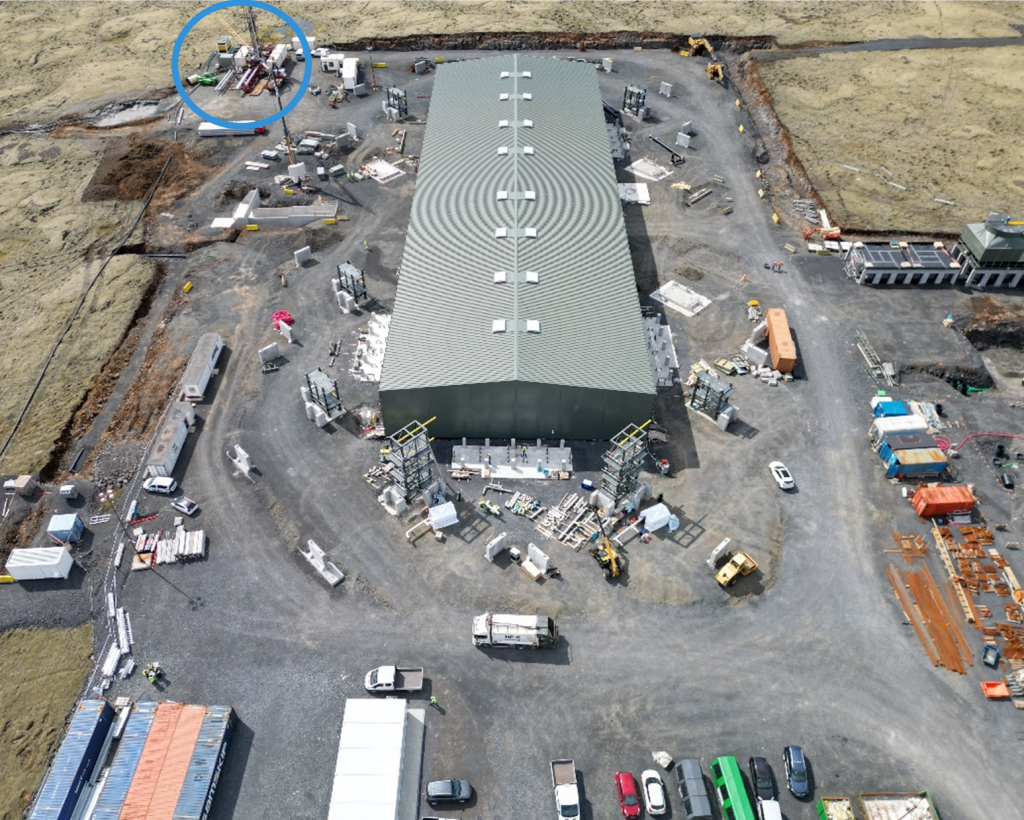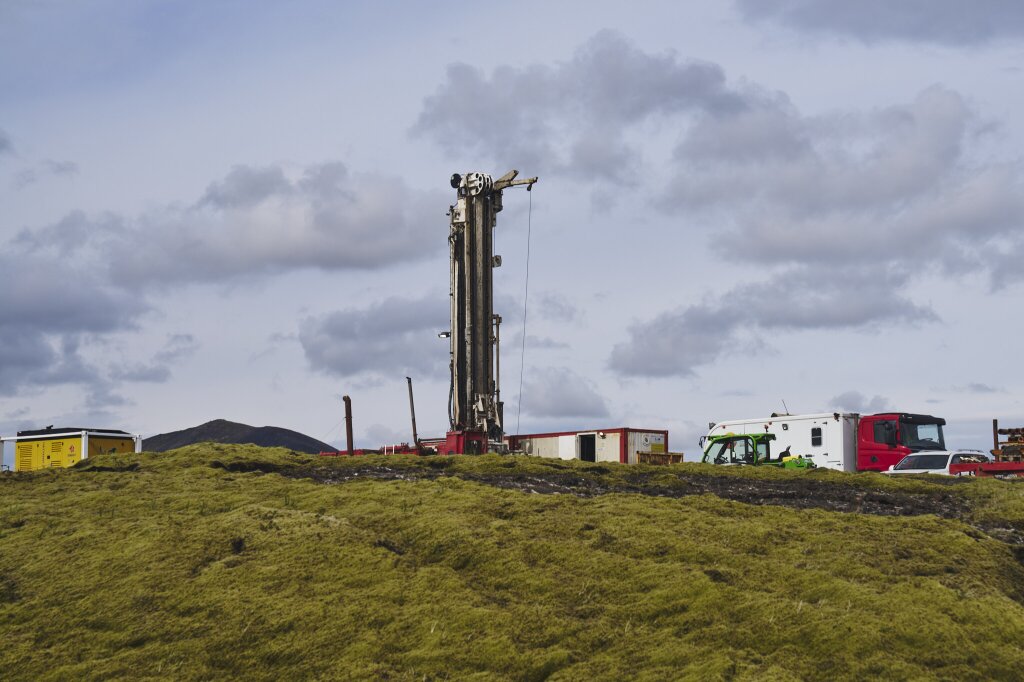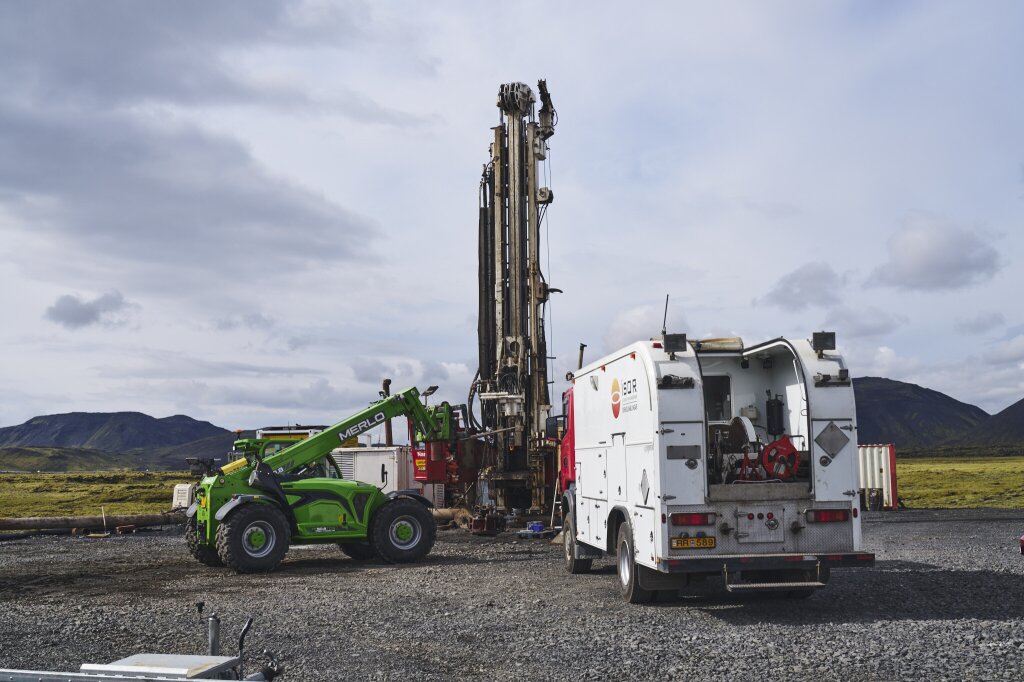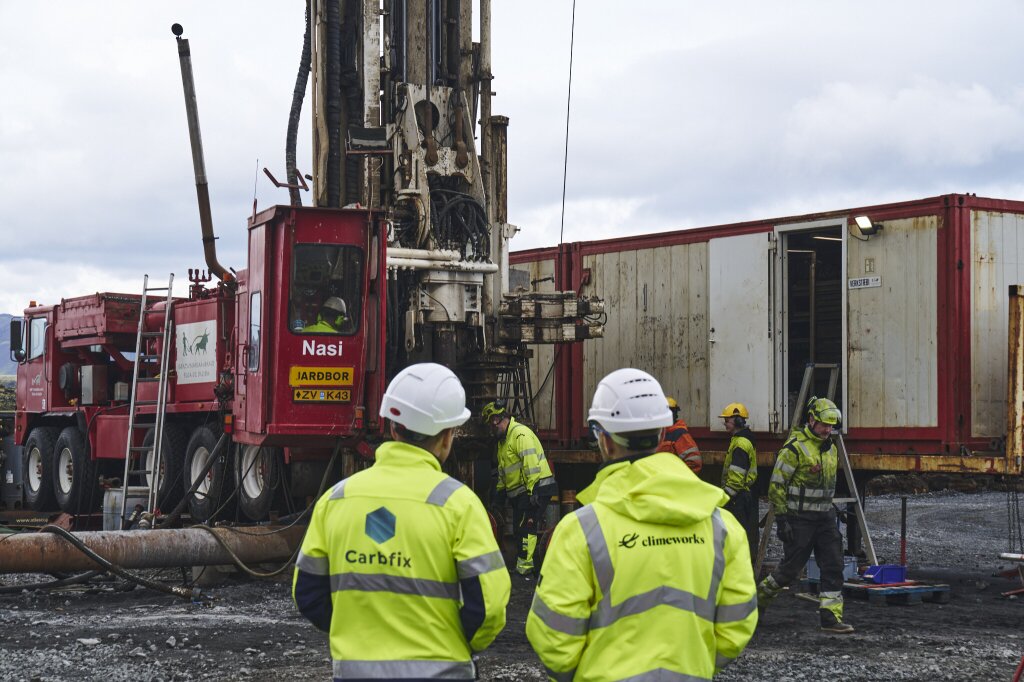
It is four months since our last update on Mammoth, our largest DAC+S plant yet, and progress is visible.
With a nominal CO₂ capture capacity of up to 36’000 tons per year when fully operational, Mammoth is a key milestone on Climeworks' ambitious scale-up plan of reaching multi-megaton capacity in the 2030s and gigaton capacity by 2050.
Preparations for in-situ CO₂ storage underway, thanks to partner Carbfix
Mammoth’s groundbreaking took place in June 2022, and the cladding of the process hall and first foundations for the collector containers and maintenance hall were completed end of that year. 2023 kicked off with the start of the CO₂ collector container production.
The construction continues to follow an ambitious timeline and is making steady progress, considering current challenges in global supply chains. Now that the harsh Icelandic winter has passed, we’re pleased to share that a further key piece of the facility is about to be completed: the infrastructure for the in-situ storage, owned and operated by Carbfix. This involves the creation of boreholes (narrow shafts vertically inserted into the basalt ground) that will carry the CO₂ that Mammoth captures underground for mineralization in basalt. Housing these boreholes will be igloo-like structures, foreseen for later this year. The combination of a borehole plus housing is referred to as an “injection well”.
Mammoth's design

Mammoth's design
With these two on-site injection wells, Mammoth’s design differs from Orca’s. At Orca, the world’s first commercial DAC+S plant, the CO₂ is carried via pipeline to a single Carbfix injection well several hundred meters away. The ongoing development of the Mammoth project represents a challenging industrial project build; however, by leveraging our field experience and learnings from Orca, we can optimize the execution of the project and integration with our storage solution: Mammoth’s two in-situ injection wells are located less than 100m from the process hall. This makes for an even more efficient delivery of the air-captured CO₂ to Carbfix for permanent storage.
Rapid underground mineralization by Carbfix: natural and permanent
Rapid underground mineralization by Carbfix: natural and permanent

Rapid underground mineralization by Carbfix: natural and permanent
Carbfix permanently stores CO₂ thanks to its rapid underground mineralization approach: CO₂ is dissolved in water and stored deep underground in basalt rock formations that accelerate the natural mineralization process. As a result, the CO₂ turns into stone in less than two years. Climeworks focuses on the permanent removal of CO₂, and Carbfix’s mineralization enables just that. Carbfix’s method is one that their expert team has finetuned over the last decade and is an accelerated natural process that is fully measurable and permanent for millennia.

Geological storage of CO₂ will play a critical role in our journey to gigaton
Mineralization, as done by Carbfix, is a specific form of geological storage. Geological storage deep underground is considered a highly robust option for storing CO₂ as it combines technical maturity, permanence, and scalability. This is regardless of whether the storage is based on mineralization relying on injection of water-dissolved CO₂ (e.g., Carbfix) or conventional storage in which pure-phase CO₂ is stored underground, for example, in saline aquifers. Scientific estimates show that the global potential for geological storage of CO₂ outweighs all greenhouse gases ever emitted since the Industrial Revolution by at least a factor of 3 (CDR Primer).
Suitable sites for geological storage exist around the world. They typically include a porous and permeable reservoir rock that serves as the storage location for the CO₂, as well as an impermeable caprock above it, which safely locks the CO₂ underground.
As Climeworks scales and expands internationally, we are exploring further suitable locations for DAC combined with highly durable geological storage, including the U.S, the Middle East, and elsewhere in Europe. Trusted storage partners will be instrumental to our journey to gigaton DAC+S capacity by 2050.
As such, Mammoth is an important step we are taking on this journey, but many more will be required to reach climate impact at scale. Fuelled by 14 years of R&D and 6 years of deployment experience, Climeworks will continue to spearhead the DAC industry through deployment-led innovation and commit to the highest possible integrity on the way.
Explore past Mammoth construction updates:
Lead the race toward net zero
High-quality carbon removal for your climate strategy.




